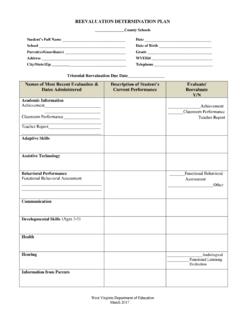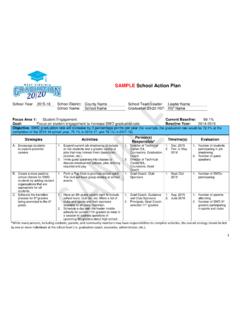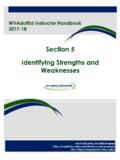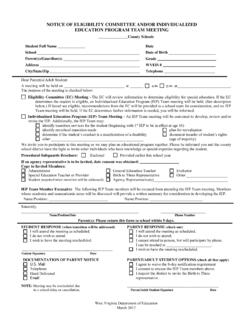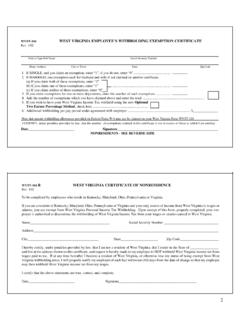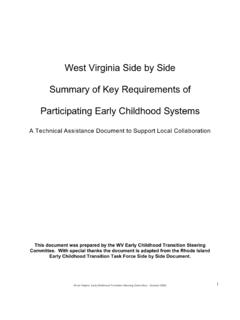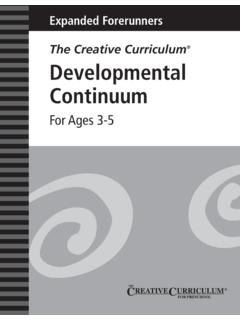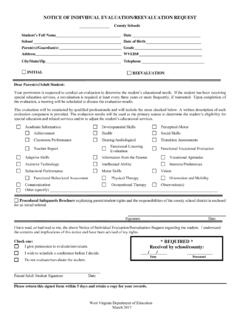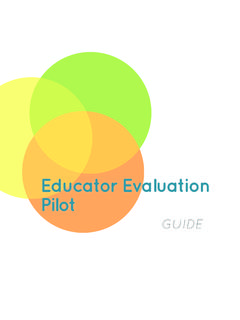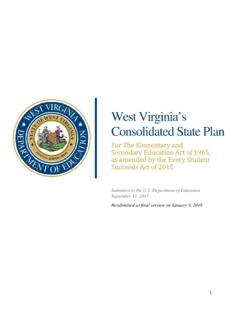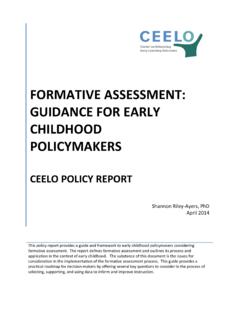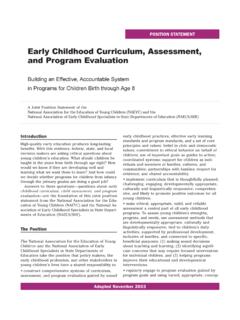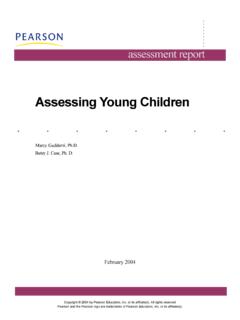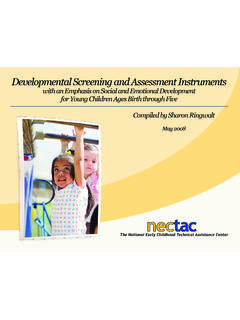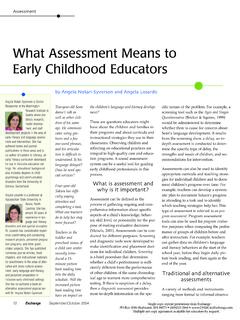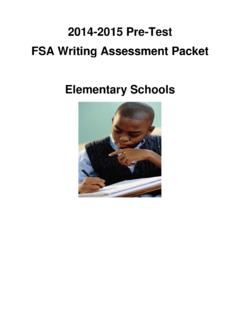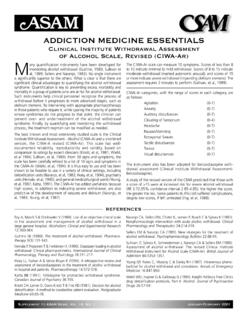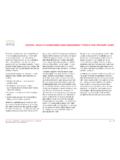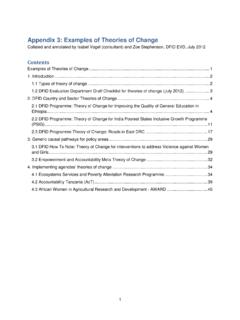Transcription of A Guide to Assessment in Early Childhood
1 A Guide to Assessment in Early ChildhoodWashington StateInfancy to Age EightOffice of Superintendent of Public Instruction (OSPI)Dr. Terry BergesonState Superintendent of Public InstructionCatherine Davidson, Ed. DChief of StaffMartin T. MuellerAssistant Superintendent, Student SupportDebra Williams-AppletonProgram Supervisor, Even Start Family Literacy and Early Childhood Education Development of this Guide is the result of a collaboration among:Office of Superintendent for Public Instruction Even Start Family Literacy, Early Childhood Education, Early Childhood Special Education, Title I, and Curriculum and Instruction ProgramsDepartment of Early LearningDepartment of Social and Health Services (DSHS)
2 Infant Toddler Early Intervention ProgramEducational Service Districts Early Childhood , Early Childhood Special Education, Curriculum and Instruction, and Migrant/Bilingual funding for this project is provided by the Office of Superintendent of Public Instruction s Even Start Family Literacy and Early Childhood Special Education Programs, the Department of Early Learning, and a generous contribution from Thrive By Five Washington. 2008 Washington State Office of Superintendent of Public Instruction. This document may be freely reproduced without permission for non-profit, educational purposes. Use of or reference to this document should cite: AGuide to Assessment in Early Childhood ; Infancy to Age Eight.
3 Washington State Office of Superintendent of Public Instruction, of Washingtonii A Guide TO Assessment IN Early CHILDHOODA Guide to Assessment in Early ChildhoodInfancy to Age Eight Acknowledgements Projects like this one come to completion only through the vision, expertise, and hard work of a large number of people. The author would like to expresses particular gratitude for the contributions of the following individuals:Debra Williams-Appleton for her commitment to high quality Assessment prac-tices in Early Childhood education;Molly Friedrichsen for her tireless, cheerful, effi cient, and competent editorial and production assistance; andKaren Walker for timely, careful, and thorough editing of multiple drafts of this Offi ce of Superintendent of Public Instruction expresses sincere gratitude to the Early Childhood Assessment Workgroup for providing dedicated guidance and expertise.
4 Members of the Workgroup(whose names appear below) also acted as contributing reviewers and Ferguson, Early Childhood Education and Reading, Educational Service District 189 Mary Fischer, Early Childhood Special Education and Readiness to Learn, Educational Service District 114 Carol Hall, Early Childhood Education and School Improvement, Educational Service District 112 Dave Irwin, Migrant/bilingual, Educational Service District 112 Leslie Keller, Department of Early LearningMary Perkins, Early Childhood Education, Educational Service District 113 Anne Renschler, Early Childhood Education, Title I, Offi ce of the Superintendent of Public InstructionKaren Walker.
5 Early Childhood Special Education, Offi ce of Superintendent of Public InstructionDebra Williams-Appleton, Early Childhood Education and Even Start Family Literacy, Offi ce of Superintendent of Public InstructionKaren Woodsum, Infant Toddler Early Inter-vention, Department of Social & Health ServicesEd Yonamine, Early Childhood Education and Assistance ProgramAdditionally, many thanks go out to the other individuals named below who provided fi nal review and Bohanon, Department of Early LearningLou Colwell, Special Education, Offi ce of Superintendent of Public InstructionLexie Domaradski, Curriculum and Instruction, Offi ce of Superintendent of Public InstructionKeith Hyatt, Western Washington UniversityCynthia Juarez, Childcare Licensing, Department of Early LearningJoyce Kilmer, Early Childhood Education and Assistance Program, Department of Early LearningSusan Sandall, University of Wa sh i ng ton A Guide TO Assessment IN Early Childhood iiiIntroduction.
6 1 Purpose of the Guide .. 1 Background ..3 Standards in Early Childhood Education .. 4 Goals 4 Head Start Child Outcomes Framework .. 5 Good Start, Grow Smart .. 5 Washington s Early Learning and Development Benchmarks .. 6 Organization and Use of this Guide ..7 Additional Readings and Resources ..8 Part I: Assessment in Early Childhood .. 11 Assessment = Getting to Know Children .. 11 Considerations in Early Childhood Assessment .. 12 Purposes of Assessment .. 14 Screening Assessment .. 15 Instructional Assessment .. 15 Diagnostic Assessment .. 15 Assessment for Program Evaluation/Accountability .. 15 Methods of Assessment .. 15 Types and Properties of Assessments.
7 16 General Caveats .. 17 Figure 1: Assessment System .. 18 Additional Readings and Resources .. 19 Screening Assessments .. 21 What is Screening? .. 21 Purpose of Screening .. 21 Characteristics of Screening Assessments .. 22 Recommended Practices in 23 Table of ContentsPAGEiv A Guide TO Assessment IN Early CHILDHOODS tate and Federal Requirements .. 24 School Readiness .. 25 Potential Screening Instruments .. 26 Sample Screening Instruments .. 26 Table 1: Characteristics of Screening 27 Additional Readings and Resources .. 28 Assessments to Inform and Monitor Instruction ..29 What is Assessment to Inform and Monitor Instruction?
8 29 Purposes of Assessment to Inform and Monitor Instruction .. 30 Characteristics of Instructional Assessments .. 30 Developmental Assessments to Inform and Monitor 33 Assessments to Inform and Monitor Early Academic Instruction .. 33 Figure 2: Response to Intervention (RTI) Model .. 34 Figure 3: Recognition and Response Model .. 35 Recommended Practices in Assessment to Inform and Monitor Instruction .. 36 Methods for Collecting Ongoing Assessment Information .. 37 Using Instructional Assessment Effectively .. 38 Potential Instruments to Inform and Monitor Instruction .. 39 Sample Instructional Instruments .. 39 Table 2: Characteristics of Assessments to Inform and Monitor Instruction.
9 40 Additional Readings and Resources .. 41 Diagnostic Assessments ..43 What is Diagnostic Assessment ? .. 43 Purpose of Diagnostic Assessments ..44 Characteristics of Diagnostic Assessments ..44 Eligibility Determination for Infants, Toddlers, and Preschoolers .. 44 Table 3: Washington State Eligibility Criteria for Infant Toddler Intervention and Special 45 Diagnosis of Early Academic Problems .. 47 Recommended Practices in Diagnostic 48A Guide TO Assessment IN Early Childhood vState and Federal Requirements .. 50 School Readiness .. 50 Potential Diagnostic Instruments .. 51 Sample Diagnostic Instruments .. 52 Table 4: Characteristics of Diagnostic Assessments.
10 53 Additional Readings and Resources .. 54 Program Evaluation and Accountability Assessments ..55 What is Program Evaluation and Accountability Assessment ? .. 55 Purposes of Program Evaluation and Accountability Assessment .. 56 Characteristics of Program Evaluations and Accountability Assessments .. 57 Recommended Practices in Program Evaluation and Accountability Assessment .. 59 General Caveats .. 61 Potential Instruments for Program Evaluation .. 61A Few Useful Instruments for Program Evaluation .. 62 Table 5: Characteristics of Accountability & Program Evaluation Assessments .. 63 Additional Readings and Resources ..64 References for Part I.
